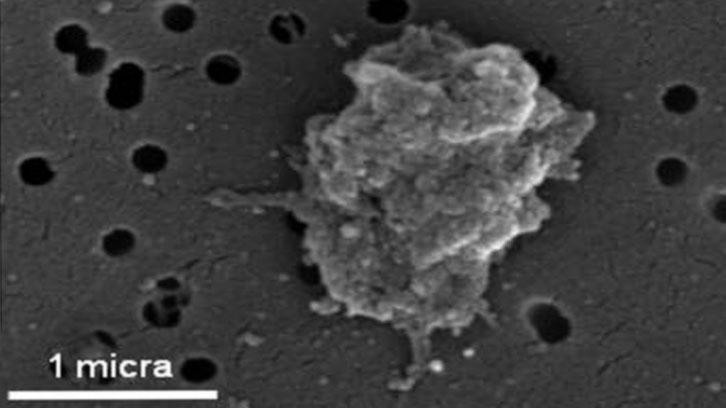Aggresomes, a new biofunctional material in nanomedicine and biotechnology

Production of recombinant proteins in the bacterium Escherichia coli usually results in the aggregation of such proteins and their accumulation as insoluble nanoparticles, named inclusion bodies (IBs). In recent years, the functionality and possible applications of IBs in nanomedicine and biotechnology have been studied in detail. In this context, the Nanobiotechnology group from the Institut de Biotecnologia i de Biomedicina, UAB, a member of the CIBER-BBN and led by Dr. Antonio Villaverde, showed in 2005 that aggregation did not inactivate enzymes or fluorescent proteins, which remained biologically active within IBs. Since then, the group has successfully explored IBs as biofunctional topographies in tissue engineering, and as new “drug delivery systems”, generating the concept of “nanopill”.
IBs have also been studied as self-assembled biocatalyzers that can be used in catalysis reactions, in an appealing approach to address some of the drawbacks associated with enzyme immobilization processes. The results obtained opened up a plethora of possibilities in the field of industrial enzymatic transformations, since IBs are nanoparticles that are enzymatically active, mechanically stable, produced and purified in a cost-efficient manner, and can be recovered and reused in several reactions.
However, many enzymes with possible biomedical or biotechnological applications cannot be produced in bacterial systems due to the inability of such microorganisms to perform post-translational modifications, usually essential for protein functionality. In these cases, using mammalian cells as factories able to generate functional proteins emerges as an appealing alternative.
But the formation of protein aggregates is not exclusive to prokaryotic cells, and proteins expressed in eukaryotic systems can form insoluble nanoparticles, called “aggresomes”, as a response to the accumulation of misfolded, non-proteolyzed recombinant protein. Using a fluorescent protein as a model, the formation mechanism, composition, and possible function of aggresomes have been addressed. Such studies showed that aggresomes are biologically active (fluorescent), but the implications of this observation and their possible medical or biotechnological applications as nanoparticulate biomaterial were never further explored in detail.
Following previous work with bacterial IBs, Dr. José L. Corchero (a researcher from CIBER-BBN) and Dr. Escarlata Rodríguez, both from Dr. Villaverde´s group, recently led and published a work that evaluates the functionality and possible applications as immobilized biocatalyzers of aggresomes produced in mammalian cells and formed by a recombinant enzyme.
This work revealed that approximately 40% of the total enzyme accumulates within aggresomes. Such aggregates, with a diameter of ~ 1 micron, are not homogeneous structures, but result from the self-assembly of smaller (50-100 nm diameter) nanoparticles. Moreover, the enzyme within the aggresomes is not inactive, retaining more than 55% of the activity of the soluble form of the enzyme, and is more resistant to temperature inactivation. Aggresomes have a nucleus that is highly resistant to solubilization. Finally, aggresomes are easily recovered from the reaction mixture by centrifugation, and can be reused in several reactions, keeping up to 70% of the initial activity after 5 catalytic reactions.
Based on these results, the authors have proposed aggresomes as a new functional biomaterial with excellent potential as a self-assembled and immobilized biocatalyzer, in the context of the development of new nanostructured protein-based biomaterials. This strategy is of special interest in the case of recombinant proteins that, due to the post-translational modifications they need, cannot be produced in bacteria as functional IBs.
Institut de Biotecnologia i de Biomedicina (IBB-UAB)
References
Rodríguez-Carmona, E.; Mendoza, R.; Ruiz-Cánovas, E.; Ferrer-Miralles, N.; Abasolo, I.; Schwartz, S. Jr.; Villaverde, A.; Corchero, J. L. A novel bio-functional material based on mammalian cell aggresomes. Applied Microbiology and Biotechnology. 2015, vol. 99, num. 17, p. 7079-7088. doi: 10.1007/s00253-015-6684-0.


